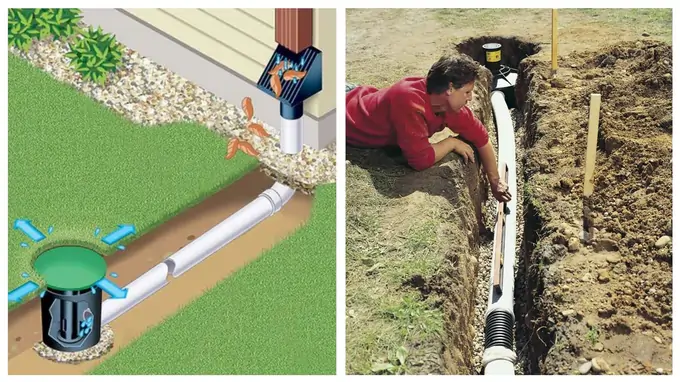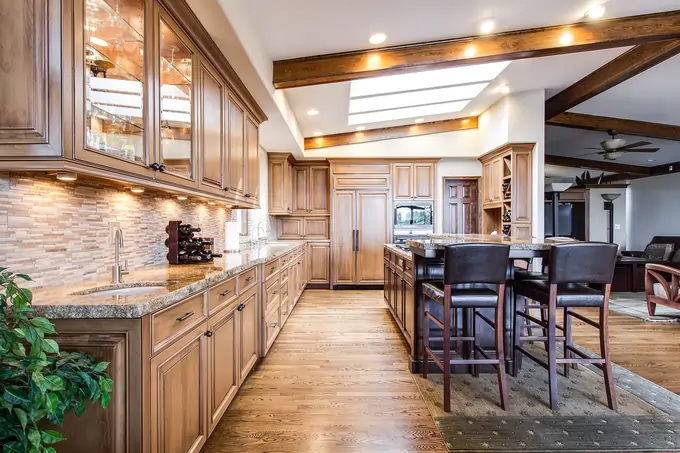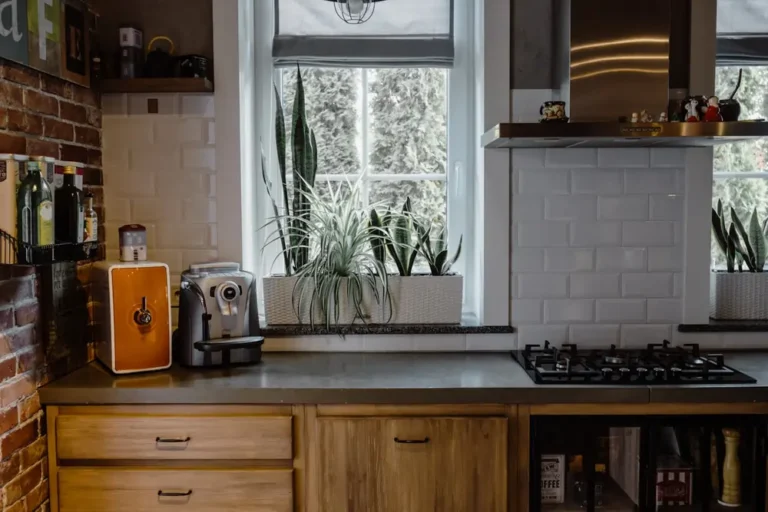Are you tired of dealing with water pooling in your yard after every rainstorm? Does the thought of foundation damage keep you up at night? You’re not alone. Many homeowners face these issues, but there’s a solution: underground drainage systems.
In this comprehensive guide, we’ll dive deep into the world of underground drainage pipes and explore how they can protect your property from water damage. By the end, you’ll have all the knowledge you need to make informed decisions about your home’s drainage needs.
Underground Drainage System
When it comes to keeping your home safe from water damage, an underground drainage system is your secret weapon! Did you know that 90% of foundation problems are caused by improper water management? If you’re looking to safeguard your property, understanding underground drainage systems is a must. From preventing flooding to improving soil stability, these systems are the unsung heroes beneath our feet. In this guide, we’ll break down the essentials of underground drainage systems—how they work, why they’re important, and what you need to consider before installation.
What is an Underground Drainage System?
An underground drainage system is a network of pipes and channels installed beneath the ground surface to manage and redirect excess water. Unlike surface drainage systems, which are visible and can be unsightly, underground systems work silently beneath our feet.
Definition of an underground drainage system
An underground drainage system is a complex network of pipes, channels, and outlets designed to collect, transport, and dispose of excess water from a property. These systems play a crucial role in stormwater management and are essential for both urban and rural settings.
Key components: pipes, channels, and outlets
The heart of any underground drainage system is its network of pipes. These drainage pipes come in various materials, such as PVC, corrugated plastic, or concrete, each with its own strengths. Channels help guide water into the pipes, while outlets ensure proper water dispersal.
Comparison with surface drainage systems
While surface drainage systems like ditches and swales are visible, underground drainage pipes offer a more discreet and efficient solution. They don’t take up valuable space on your property and are less likely to become clogged with debris.
Importance of effective drainage in urban and rural settings
 Effective drainage is crucial in both urban and rural environments. In cities, it prevents flooding and protects infrastructure. In rural areas, it’s essential for soil drainage and agricultural productivity. Without proper drainage, we risk erosion, flooding, and property damage.
Effective drainage is crucial in both urban and rural environments. In cities, it prevents flooding and protects infrastructure. In rural areas, it’s essential for soil drainage and agricultural productivity. Without proper drainage, we risk erosion, flooding, and property damage.
Types of Underground Drainage Systems
There are various types of drainage systems to keep water away from your home’s foundation. You can install an in-ground drainage system like a subsurface drainage system or a trench drainage system. These systems use a perforated drain pipe covered with a drain cover to help prevent water from pooling around your house.
For areas with clay soil or heavy water runoff, a trench filled with gravel or a dry well can be effective. A dry well is a trench filled with gravel or rock that allows rainwater to percolate into the surrounding soil. You might also need a sump pump to handle ground water and excess rainwater.
Another option is a pipe system that directs water away from your home’s foundation to an underground sewer or main drainage. You can also install a dry well to manage water runoff. Don’t forget to dig the trench properly and ensure it’s filled with gravel to enhance drainage.
Not all drainage systems are created equal. Let’s explore the most common types and their specific uses.
French drains: how they work and where they’re used
French drain installation is popular for managing groundwater around foundations. These systems consist of a perforated pipe surrounded by gravel, which allows water to enter the pipe from all directions.
Trench drains: best for driveways and large spaces
A trench drain system is ideal for managing surface water in areas with heavy foot or vehicle traffic. They’re often used in driveways, patios, and commercial spaces to quickly channel water away.
Stormwater drainage systems: handling excessive rain
Stormwater management systems are designed to handle large volumes of water during heavy rainfall. These systems often include catch basins and larger pipes to prevent flooding in urban areas.
Subsurface drainage: preventing waterlogging in agricultural areas
Subsurface drainage is crucial in agricultural settings to prevent waterlogging and improve crop yields. These systems are installed below the root zone to remove excess water from the soil.
Benefits of each type and choosing the right one for your needs
Each system has its strengths, and the right choice depends on your specific needs. Consider factors like soil type, rainfall patterns, and property layout when selecting a drainage solution.
How to Install an Underground Drainage System
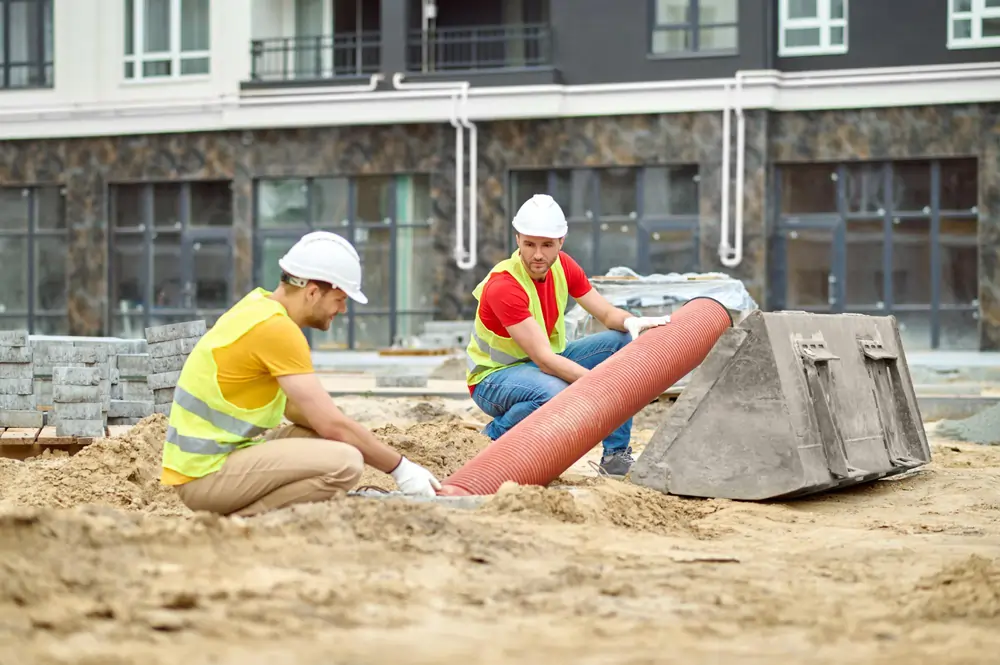 Hey there! So, if you’re thinking about installing an underground drainage system, here’s a quick guide. This drainage system typically involves managing excess water around your home and yard. Start by figuring out the depth of your trench, then dig a hole to that depth. At the bottom of the trench, place a specific drainage item like a downspout drain box or a perforated pipe for effective surface water management.
Hey there! So, if you’re thinking about installing an underground drainage system, here’s a quick guide. This drainage system typically involves managing excess water around your home and yard. Start by figuring out the depth of your trench, then dig a hole to that depth. At the bottom of the trench, place a specific drainage item like a downspout drain box or a perforated pipe for effective surface water management.
Next, make sure the sides of the dry well are secure, and don’t forget to put an inch of fabric around it to keep debris from entering. After that, cover the trench with a top cover and ensure it’s at ground level. This setup is super useful in residential areas, especially in areas prone to heavy rainfall. It helps collect and redirect water, reducing the risk of soil erosion.
Finally, once everything’s in place, just loosen the screws on the top of the dry well to check for any issues. Sure, it might take a few days of backbreaking labor, but it’s totally worth it for a well-managed yard!
Installing an underground drainage system can be a complex process. Here’s what you need to know:
Preparing your site: evaluating water flow and soil type
Before installation, it’s crucial to understand your property’s natural water flow and soil composition. This information will guide the design of your drainage system.
Tools and materials you’ll need for the installation
You’ll need various tools, including shovels, a level, and potentially a trencher. Materials include pipes, gravel, and geotextile fabric.
Step-by-step guide: digging trenches, laying pipes, and adding filters
- Mark the layout of your drainage system
- Dig trenches following the marked layout
- Line trenches with geotextile fabric
- Lay perforated pipes in the trenches
- Cover pipes with gravel
- Wrap fabric over the gravel
- Backfill the trench with soil
Common mistakes to avoid during installation
Improper grading and inadequate pipe sizing are common errors. Always ensure proper slope for water flow and choose appropriate pipe sizes for your water volume.
DIY vs. hiring professionals: costs and time considerations
While DIY installation can save money, professional installation ensures proper design and execution. Consider your skills, time, and budget when making this decision.
Benefits of Installing an Underground Drainage System
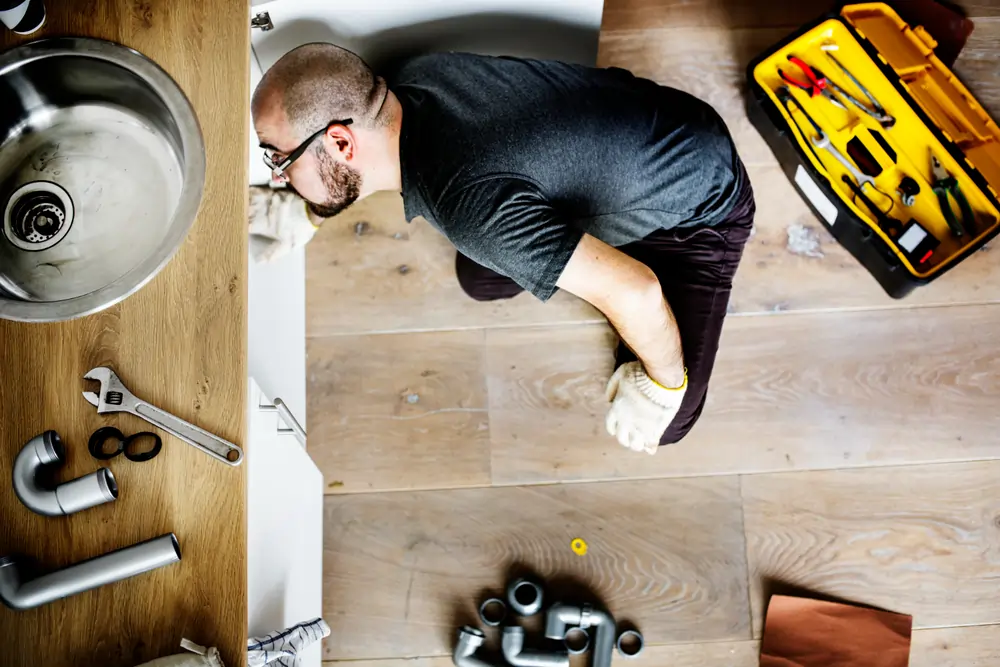 One of the primary benefits of installing an underground drainage system is that it helps keep water away from the house. By using a gutter system connected to the drain, you can efficiently collect and disperse water.
One of the primary benefits of installing an underground drainage system is that it helps keep water away from the house. By using a gutter system connected to the drain, you can efficiently collect and disperse water.
These systems often come in a variety of designs, typically containing a perforated pipe that allows water to percolate into the soil. This setup ensures water flows smoothly around the foundation, preventing damage.
The advantages of a well-designed drainage system are numerous:
Preventing foundation damage and soil erosion
By redirecting water away from your home, underground drainage systems protect your foundation from water damage and prevent soil erosion.
Reducing the risk of flooding in your yard or home
Effective drainage significantly reduces the risk of flooding, protecting your property and possessions from water damage.
Protecting landscaping and hardscaping elements
Proper drainage prevents waterlogging, which can damage plants and erode hardscaping features like patios and retaining walls.
Improving overall property value and longevity
A well-maintained drainage system can increase your property value and extend the life of your home and landscape features.
Environmental benefits: reducing stormwater runoff pollution
By managing water on-site, these systems help reduce pollutants in stormwater runoff, benefiting local ecosystems.
Common Problems in Underground Drainage Systems and How to Fix Them
Underground drainage systems can be a pain, right? One of the primary issues is clogging in the gutter system. When the system isn’t properly installed underground, it leads to water pooling around the foundation, causing damage.
To fix this, make sure the system is installed with a perforated pipe to allow water to percolate away from the house. These pipes come in a variety of sizes to suit different needs.
Another tip is to connect the drain to a system that can efficiently collect and disperse water. This ensures water flows smoothly and doesn’t cause any issues.
Even the best systems can encounter issues. Here’s what to watch for:
Clogged pipes: causes, prevention, and DIY solutions
Clogged drains are often caused by debris buildup. Regular cleaning and installing filters can prevent this issue.
Water pooling and backflow issues
If you notice water pooling or backing up, it could indicate a blockage or improper grading. Check for obstructions and ensure proper slope.
Cracks or damage to drainage pipes: repair vs. replacement
Small cracks can often be repaired, but extensive damage may require pipe replacement. Regular inspections can catch issues early.
Signs of malfunctioning systems and early warning signs
Watch for wet spots in your yard, musty odors, or increased insect activity, which can indicate drainage problems.
When to call in an expert: handling complex drainage problems
For complex issues or if you’re unsure about the problem, it’s best to consult with drainage contractors who can provide expert solutions.
Maintenance Tips for Your Underground Drainage System
Hey there! Keeping your underground drainage system in top shape is super important. Make sure to clean out any debris regularly to allow water to flow smoothly. Also, check for any cracks or leaks and fix them ASAP. A little maintenance goes a long way in preventing bigger issues!
Regular maintenance is key to ensuring your system’s longevity:
Regular inspections: what to look for and how often
Conduct visual inspections at least twice a year, looking for signs of damage or poor drainage.
Cleaning techniques: flushing, snaking, and other methods
Regular cleaning prevents clogs. Flushing with water or using a plumbing snake can keep pipes clear.
Seasonal maintenance: handling winter freeze and spring thaw
In colder climates, protect pipes from freezing in winter and be prepared for increased water flow during spring thaw.
Best practices for extending the life of your drainage system
Avoid planting trees near drainage pipes, as roots can cause damage. Also, be cautious when digging in your yard to prevent accidental pipe damage.
Cost-effective maintenance tips that save you time and money
Simple actions like keeping gutters clean and directing downspouts away from your foundation can prevent major drainage issues.
Costs Involved in Underground Drainage Systems
Understanding the costs involved can help you budget effectively:
Average cost of installation for different types of systems
Costs can vary widely depending on the system type and property size. French drains typically cost $2,000-$6,000, while more complex systems can exceed $10,000.
Factors that influence pricing: size, materials, and labor
The size of your property, chosen materials, and local labor rates all impact the final cost of installation.
How to budget for maintenance and potential repairs
Set aside funds for annual maintenance and potential repairs. Regular upkeep can prevent costly emergencies.
Money-saving tips: DIY vs. professional help
While DIY can save money upfront, professional installation often provides better long-term value and peace of mind.
Conclusion
Underground drainage systems are essential for protecting your property from water damage and enhancing your home’s overall durability. Whether you’re considering installing a new system or upgrading your existing one, understanding the ins and outs of underground drainage is crucial. With proper installation and regular maintenance, these systems can last for decades, ensuring peace of mind and a dry home! Don’t wait—start planning your underground drainage system today, and if you have any questions, feel free to leave a comment below or share your experience!
Understanding and implementing an effective underground drainage system is crucial for protecting your property and maintaining its value. By taking proactive steps to manage water flow, you’re investing in the long-term health and stability of your home and landscape. Don’t wait for water problems to worsen – start planning your drainage solution today!
